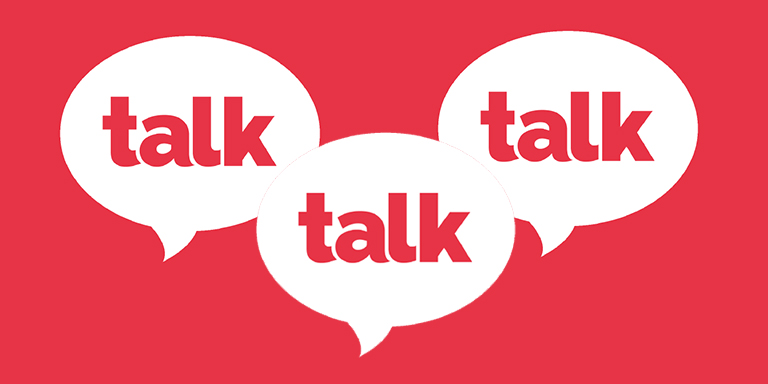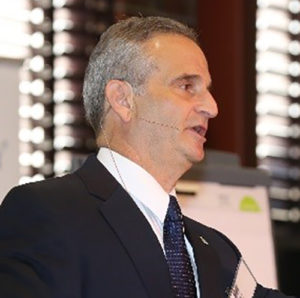
Listening to Major Donors Is Over Rated is Jim Eskin’s take on the tired old fundraising adage that goes something like this, “listen your way to a major gift.” Here’s what Eskin has to share:
I’ve never been congratulated by a nonprofit CEO, Executive Director, Board Chair or even a major gift donor for being a good listener.
Now, I fully recognize that most nonprofit leaders emphasize that successful fundraisers must be superb listeners. I agree and have often preached that gospel myself. They must consistently be on the hunt for clues and guide conversations that reveal what the donor prospect wants to contribute to, how much, and when. But let’s be honest, being a good listener is a given.
Fundraising professionals – including me – and the entire nonprofit sector place too many chips on the listening card. It is definitely a nice thing to be heard saying.
Just Google “qualities of fundraisers,” and you will find a gazillion references to one or another form of listening to major donors. We get it!
Listening to Major Donors Is Over Rated – Jim Eskin
The late Jerold Panas, the best-selling fundraising author of all time, devoted years of research and wrote prolifically on the attributes of successful fundraisers. Like many other deans of the profession, he wrote, presented and spoke repeatedly and enthusiastically on the value of listening. But topping his list of attributes for a successful fundraiser were:
(a) an outsized sense of optimism
(b) an ability to sell the dream.
I’ll go even further. Everyone insists on the necessity of strong written and oral communication skills all in the same breath. I place a lot more chips on oral communications. As a writer I know that the best writers (and I’m not close to being one) know how to effectively speak on paper.
In the spirit of the late Ralph Kiner, an outstanding baseball slugger of the 1940s and 1950s, who said singles hitters drive Chevrolets, home run hitters drive Cadillacs, listeners drive Chevys (or whatever your favorite economy vehicle is) great speakers drive Cadillacs (or whatever your favorite luxury car is).
This recognizes that the fundraiser’s job involves much more than just asking for the gift, though that is always the ultimate prize. You also need to motivate bosses, board members or others at the highest steps of the nonprofit ladders to advance relationships and friendships and schedule meetings with leadership donors who are usually impossible to meet with.
Let’s avoid being purists. Fundraising is salesmanship with the only difference that it is the sale of good works that touch, improve and save more lives. It requires the ability to inspire the donor to make a philanthropic decision that is in their own best interest or his or her vision for the betterment of the world.
This is not to be confused with acting overconfident. Now, if I insist that great fundraisers must be great speakers, I am not ignoring the hugely important quality of humility. We consider this the foundation of realizing that no one knows it all. There are self-improvement opportunities all around us. Fundraising is the ultimate continuous improvement process. Whether the responses are yes, no, or maybe, there is a genuine learning opportunity in each solicitation. Fundraisers are keenly aware of the need to keep their egos in check. Others in and out of their organizations are higher on the totem pole and must be genuinely respected for their stations of success and stature. Mission success ranks way above personal success.
Just because they can speak more productively than others in their organizations doesn’t mean they’re more important or more essential. Glib fundraisers must be genuinely passionate about the causes they are advocating. There’s no faking it.
Great speakers also realize that it is not only their vocabulary and sound of their voice that carries the day, they must be equally disciplined in how they visually communicate. Experts say that message interpretation is 7% verbal, 38% vocal and 55% visual. Since the average attention span in humans is only 8.25 seconds, your style needs to be engaging and relatable to be retained in the memory of the target audience.
Another key point: We are not talking about showmanship. We are talking about connecting with the hearts and heads of donor prospects. Words, gestures, and print and audio-visual aids empower us to get through to donor prospects.
The highest value of a strong communicator is in making the ask. Far from being anxious, fearful and hesitant, the great fundraiser can’t wait to ask. (And the bigger the gift the better!) In fact, great fundraisers who enjoy making every ask have an empty feeling about a day without a solicitation.
Strong communicators have effectively adapted the power of video-conferencing. They understand that successful video-conferencing shares common characteristics with asking in person, even though there are profound differences. Constantly maintaining eye contact is equally essential in person or over the computer screen. The background, lighting and sound must be just right.
It is an advantage to have a superlative proposal but that should only be shared at the end of the meeting and to speak for the nonprofit later when there is no representative in the room.
You don’t have to be like the Greek orator Demosthenes, and practice speaking with pebbles in your mouth, but there is no substitute for preparation and rehearsing. Practice in front of the mirror, practice with co-workers, friends and relatives.
While you might be described as a smooth talker, you don’t want to come across as being slick. The goal is a speaking style that emphasizes sincerity, credibility and clarity. While repetition is clearly a virtue, you don’t want to have to repeat yourself because the donor prospect doesn’t understand you.
Laura Fredericks, Founder and CEO of the Expert on THE ASK, maintains that during a productive meeting the donor prospect should speak 75% of the time and the fundraiser the other 25%. That means the high-performing fundraiser knows how to make every second of his or her 25% count.
Of course, there are a few exceptions to the law of inspiring donor prospects with outstanding verbal and visual communication skills. After you make the ask, you should remain absolutely silent until the donor prospect has responded. In this instance, silence is golden, and the donor’s response can be even more golden.
While it’s true that fundraisers know all about the art and science of listening, the best ones fine-tune their listening skills to support the strength of their presentation of the case for support and the ask. They are well prepared and can think on their feet.
We return to where we started: Have you ever been congratulated for the way you were a good listener? I haven’t! Superior listening skills primarily set the stage for making a cogent pitch and inspiring solicitation. Good listeners make good fundraisers, but persuasive and moving speakers make great fundraisers and raise the big bucks.
 Jim Eskin’s consulting practice, Eskin Fundraising Training builds on the success of his more than 150 fundraising workshops and webinars and provides the training, coaching and support services that nonprofits need to compete for and secure major gifts. He has authored 100 guest columns that have appeared in daily newspapers, business journals and blogs across the country, and publishes Stratagems, a monthly e-newsletter exploring timely issues and trends in philanthropy. Sign up here for a free subscription. He is author of 10 Simple Fundraising Lessons, which can be purchased here.
Jim Eskin’s consulting practice, Eskin Fundraising Training builds on the success of his more than 150 fundraising workshops and webinars and provides the training, coaching and support services that nonprofits need to compete for and secure major gifts. He has authored 100 guest columns that have appeared in daily newspapers, business journals and blogs across the country, and publishes Stratagems, a monthly e-newsletter exploring timely issues and trends in philanthropy. Sign up here for a free subscription. He is author of 10 Simple Fundraising Lessons, which can be purchased here.
Eskin Fundraising Training
10410 Pelican Oak Drive
San Antonio, TX 78254-6727
210.415.3748
[email protected]
www.eskinfundraisingtraining.com
Listening to Major Donors Is Over Rated was first posted at Major Gifts Ramp-Up
For more articles like Listening to Major Donors Is Over Rated VISIT HERE


